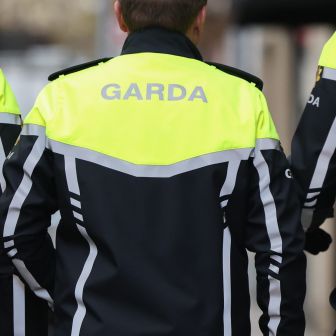The Personal Insolvency Bill completed its passage through both Houses of the Oireachtas on 19 December 2012 and was signed into law as the Personal Insolvency Act 2012 by the President of Ireland on 26 December 2012.
1. The Act only applies to the personal debts of an individual. It will include the business liabilities of individuals who operated as sole traders. It does not deal with corporate debt - there are separate laws which deal with companies.
2. The Act has established an independent Insolvency Service of Ireland to oversee and operate the new personal insolvency system.
3. The Act introduces three new insolvency procedures to hopefully enable individuals in difficulties resolve their debt issues without having to resort to becoming bankrupt. These procedures are Debt Relief Notices (“DRN”), Debt Settlement Arrangements (“DSA”) and Personal Insolvency Arrangements (“PIA”).
4. The ISI will authorise and then monitor and regulate “approved intermediaries” to implement DRNs and “Personal Insolvency Practitioners" (“PIPS”) for the purpose of implementing DSA and PIAs.
5. Debt Relief Notices (“DRN”) will deal with unsecured debt and secured debt where the aggregate value is €20,000 or less. The Personal Insolvency Act 2012 provides for, subject to certain conditions, a Debt Relief Notice of forgiveness for persons with no assets and no income that are unable to meet qualifying debts totalling not more than €20,000. The purpose is to create an efficient non-judicial means of allowing persons to resolve unmanageable unsecured debt problems (similar systems operate in the UK, Northern Ireland and Australia). With the assistance of an approved intermediary the debtor may apply to the Insolvency Service to certify that the qualifying debts be frozen for three years following which if, the person still cannot pay, the Service will certify that the debt is written off.
6. Debt Settlement Arrangements (“DSA”) which will deal with unsecured debt. There is no cap again on the maximum amount of unsecured debt. Secured debt is unaffected. The DSA would assist persons who have an income, assets and debts that exceed the threshold (€20,000) for a Debt Relief Certificate. With the required assistance of a personal insolvency practitioner, the debtor may apply to the Insolvency Service for a Protective Certificate in respect of preparation of a DSA. If granted, the Certificate would provide for a standstill period during which creditors may not take action against the debtor. The trustee would then put forward a DSA to creditors for agreement. If approved, the Insolvency Service would provide formal registration of the DSA. It will generally run for 5 years, which may be extended to 6. At the satisfactory conclusion of the DSA all debts covered by it would be discharged. The Insolvency Service has no role in the negotiation and agreement of a DSA. Similar systems operate in the UK, Northern Ireland and Australia.
7. Personal Insolvency Arrangements (“PIA”) provides for a system between a debtor and one or more creditors to repay an amount of both secured and unsecured debt over a period of 6 years (with a possible agreed extension to 7 years). Secured debt includes principle private investments, resident investment properties etc. It will deal with debts between €20,001 and up to a ceiling of €3m. The €3m cap can be waived with the written consent of all secured creditors. Insofar as is practicable, a PIP must try and formulate the arrangement on terms that avoid the debtor being required to sell or vacate their home.
8. The Act also changes current bankruptcy law to make it more enlightened, less punitive and less costly approach to bankruptcy. It will also to bring it into line with best practice in other jurisdictions. The main elements of the bankruptcy reforms include the introduction of a minimum debt amount of €20,000 in respect of a creditor petition for bankruptcy; the automatic discharge period from bankruptcy (subject to certain conditions) is reduced from the current 12 years to 3 years after the date of adjudication; and there is provision for a court to make a payment order requiring the discharged bankrupt to make certain payments in favour of creditors, allowing for reasonable living expenses, for a period of up to five years.
9. What will people be allowed to live on? The Insolvency Service is a body set up to ensure that the Personal Insolvency Legislation is administered in a fair and structured manner. The Insolvency Service is required to prepare and issue guidelines as to what constitutes a reasonable standard of living and reasonable living expenses. On the 18 April 2013, the Insolvency Service published those guidelines.
It is intended that the ‘reasonable standard of living’ does not mean a persona should only live at subsistence level, but that they should be able to participate in the life of the community.
The guidelines set a base level for a reasonable standard of living and reasonable living expenses. Where a DSA or a PIA is proposed, the decision on reasonableness or otherwise of living expenses will be a matter for the creditors to determine on a case by case basis with PIP acting to facilitate debtors and creditors in working out an arrangement acceptable to both. Reasonable living standards may be higher than the guides where acceptable to creditors. For a DRN, there is a strict application of the reasonable living expenses model in determining the eligibility of the applicant.
10. The new Act is a very complex piece of legislation, and those in financial difficulty should take appropriate advice to determine what the best options for their particular circumstances are.
Tom Murray works with Friel Stafford. You can find out more about their practice at http://www.frielstafford.ie/









